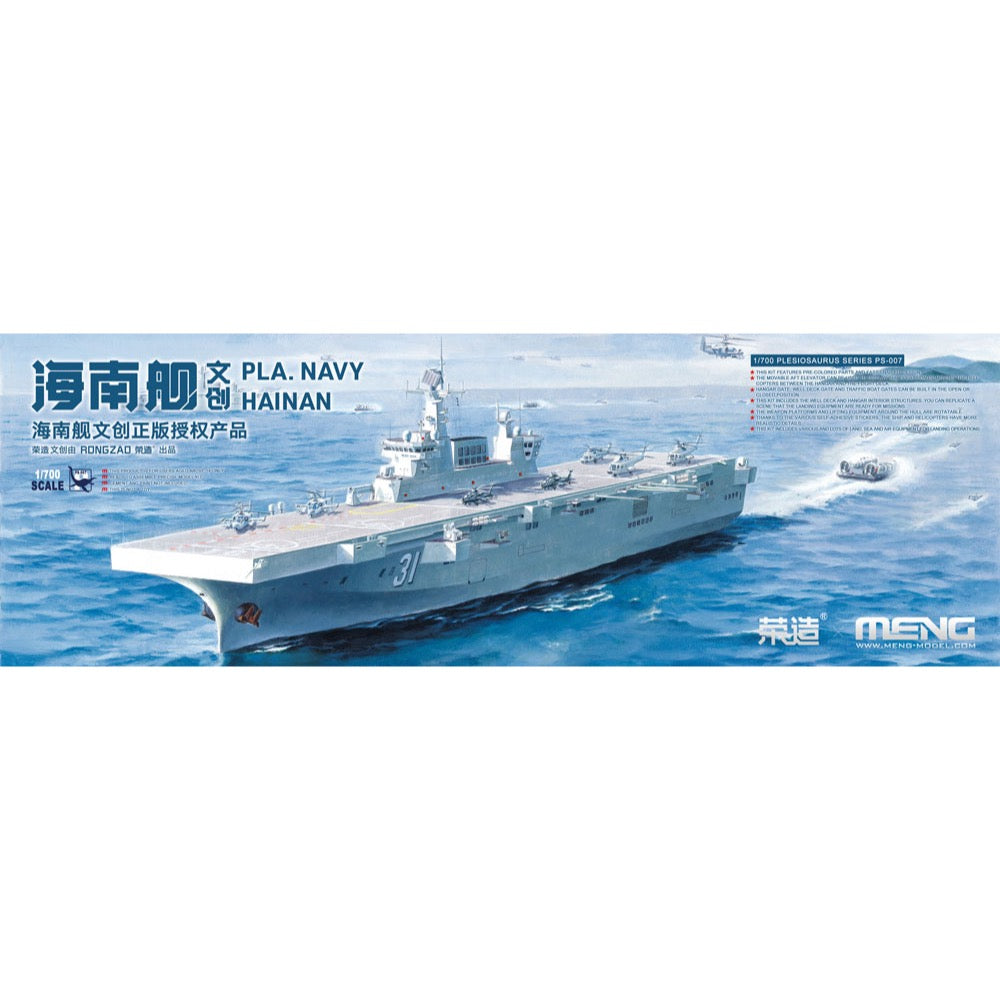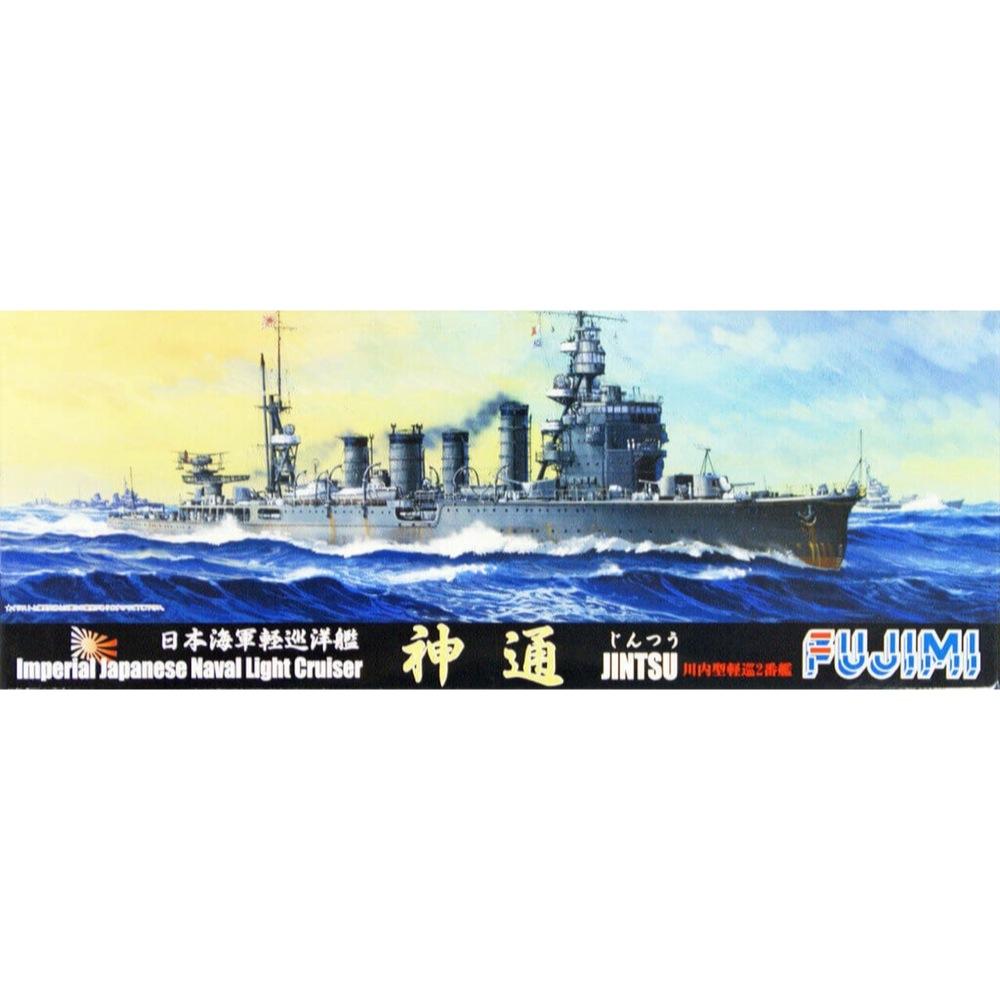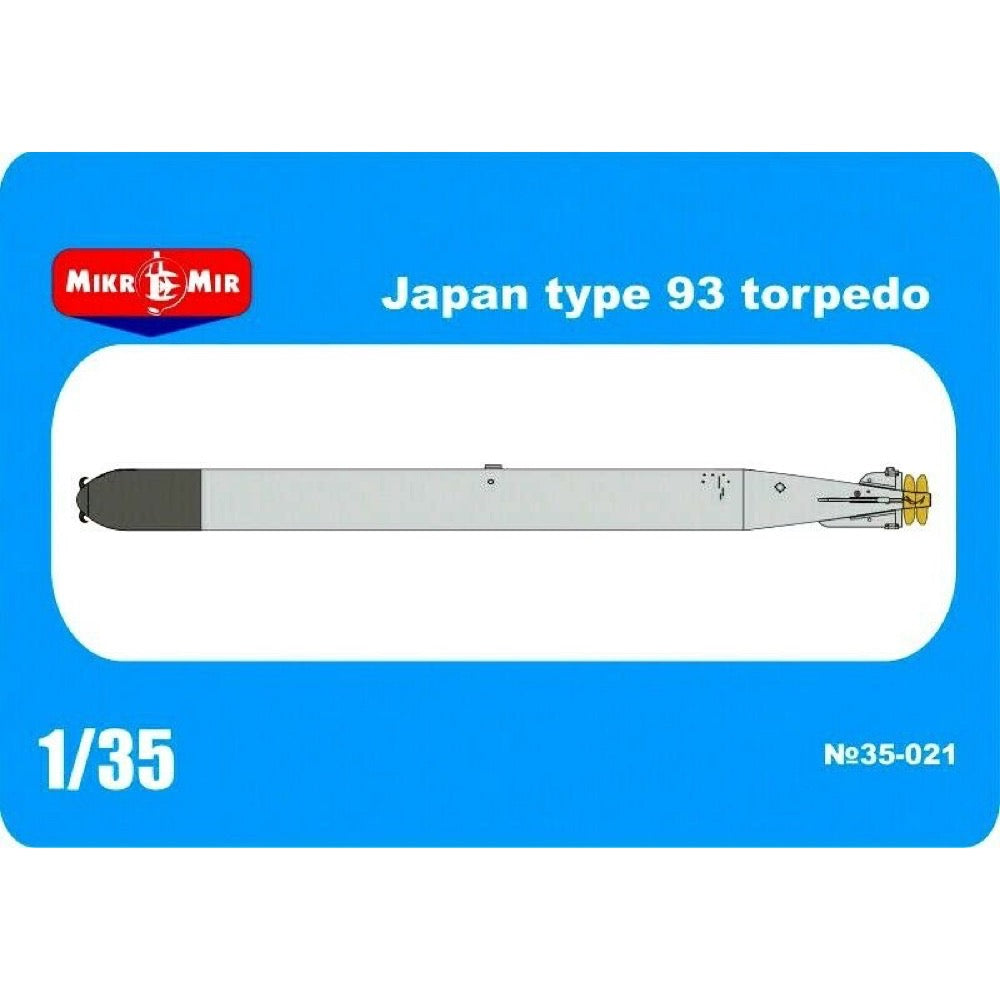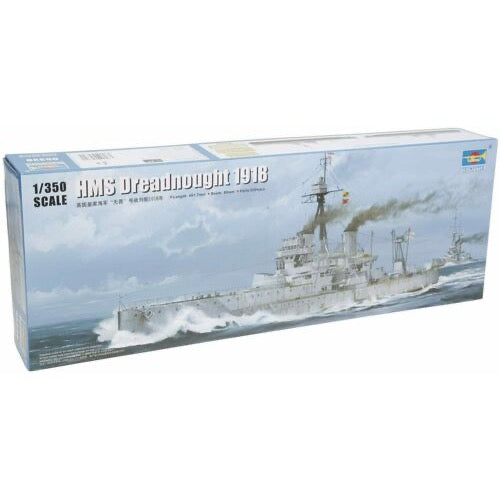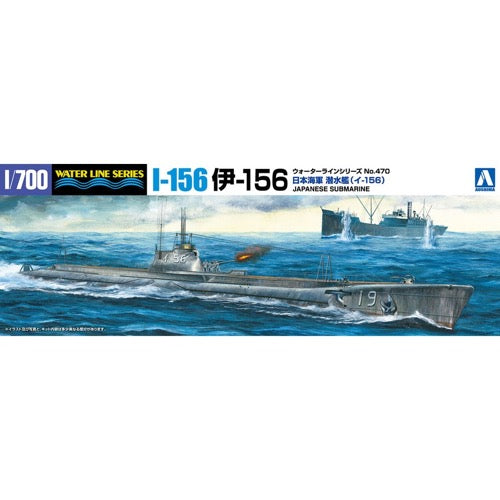
Aoshima A005826 1/700 I.J.N. Submarine I-156
The I-156 (originally I-56) was a Japanese submarine that was laid under the keel in 1926, launched in March 1928, and finally completed in March 1929. The total length of the ship at the time of launching was 101 m, width 8 m, and the maximum speed on the surface was up to 20 knots. The ship was armed with two 120 mm guns and eight 533 mm torpedo tubes. From 1945, the unit was able to carry Kaiten torpedoes.
The I-156 was of the Kaidai type. It is often classified as a "submairne cruiser", but the term "ocean submarine" also fits most closely. Undoubtedly, the I-156 was characterized by a large range of navigation, relatively high autonomy and good seagoing performance. I-156 in the 1930s operated mainly in home and Chinese waters. In the first weeks of World War II in the Pacific, he supported Japanese actions in Malaya and against the then Dutch East Indies. He also took part in the Battle of Midway in June 1942, and in 1943 he operated briefly in the Aleutian region. However, after this episode, it was intended primarily for school and training tasks. In April 1945, she was reinstated in line service as the Kaiten torpedo carrier. The I-156 happily lived to see the end of the war and was scrapped in 1946.
In order to make up for the lack of naval power due to the Washington Naval Treaty, the first submarine "I-156" of Kaidai Type 3b, which was developed to enable long-distance operations, is now available on WL! It is possible to select a later specification and reproduce the assembly, and a Kaidai 3 type b general-purpose decal is attached.
This is an injection-plastic ship model kit.
Features
- Full hull or WL (waterline specification) selection formula
- Assembly selection formula at the time of completion or after wartime refurbishment
- Includes general-purpose decals for Kaidai 3 type
- 2 ships set
Specifications
- Item Size: 32 x 11 x 4.3 cm
- Weight : 133g
- Scale: 1/700
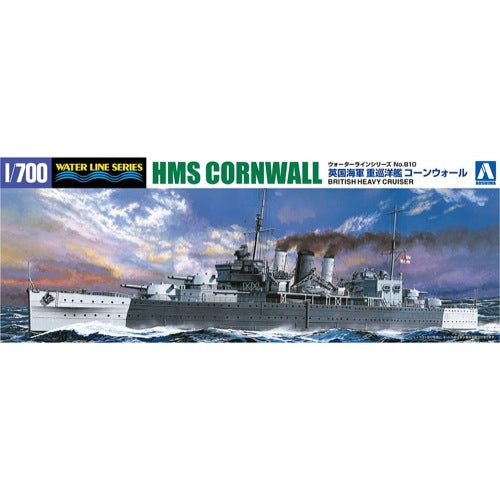
Aoshima A005674 1/700 British Heavy Cruiser Cornwall STD
HMS Cornwall (56) was a British heavy cruiser of the interwar period and World War II. The keel was laid for this unit in 1924, the launch took place in March 1926, and the entry into service with the Royal Navy - in May 1928. The total length of the ship at the time of launching was 192 meters, total width 20.9 meters, and full displacement - about 13,700 tons. The maximum speed was around 31.5-32 knots. The deck armament at the time of launching included: 8 203 mm guns, 4 102 mm guns and 4 40 mm cannons.
HMS Cornwall (56) was one of the County-class British heavy cruisers. Units of this type were built in accordance with the provisions of the Washington Treaty of 1922, but had good main armament, good armor and good top speed. They largely replaced the cruisers from World War I in the Royal Navy. One of the ships of this class was HMS Cornwall (56), which was built at Devenport Dockyard in Plymouth. He began his service in the Royal Navy by representing the British flag in the Far East, to return to the home waters in 1936, and undergo a series of renovation works in 1937-1938. In 1939 he returned to the Far East. In May 1941, he intercepted and sunk the German Penguin raider operating in the Indian Ocean. HMS Cornwall was sunk by the Japanese cabin air force on April 5, 1942 in the course of the Japanese raid on the Indian Ocean.
The glorious British heavy cruiser HMS Cornwall finally gets a model kit release from Aoshima! She was active in a wide range of battlefields in the early days of World War II, such as the North Atlantic and Indian Oceans. This kit includes the Cornwall's distinctive features such as the aircraft hangar, 20.3cm artillery, and three chimneys; an in-scale Supermarine Walrus reconnaissance aircraft is also included.
This is an injection-plastic ship model kit.
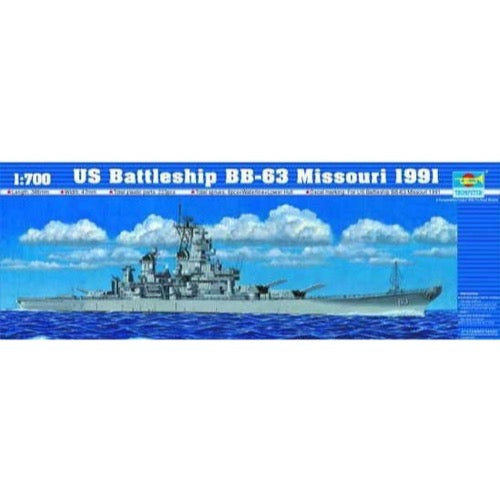
Trumpeter 05705 1/700 USS Missouri
The construction of BB-63 began on 6 January 1941 in the New York Navy Yard as the third ship of Iowa-class battleships. The Iowa-class was planned with a view to rival the super battleships (Yamato-class-to-be) planned by Japan, which withdrew from Washington and London treaty in 1936. Its design represented that the class was 45,000 tons (the very limit to the London Treaty), nine 16in/50cal guns in three batteries, and the speed of 33 knots. The speed was decided under precautions against the Japanese Kongo-class high-speed battleships, which boasted of 30 knots. To fulfill the conditions, its engine compartment for a high-power engine needed to be a large one. However, the width of warships of the US, which faced two oceans, had to be 33m at the widest in order to pass through the Panama canal. Inevitably, its length at the waterline was very long 262m. although the US Navy at that time was capable of manufacturing 18 inch guns, it was impossible to mount them on a ship under 33m-wide. And the fact that the Yamato-class had 18 inch guns had been unknown to the US until the end of WWII. Entering service in June 1944, Missouri became the temporary headquarter of the 58th high-speed task force.
Features
- Photo Etched Parts 2pcs brass propeller
- Total Sprues 8pcs + Waterline + Lower Hull
- Paint Schemes For US Battleship BB-63 Missouri 1991
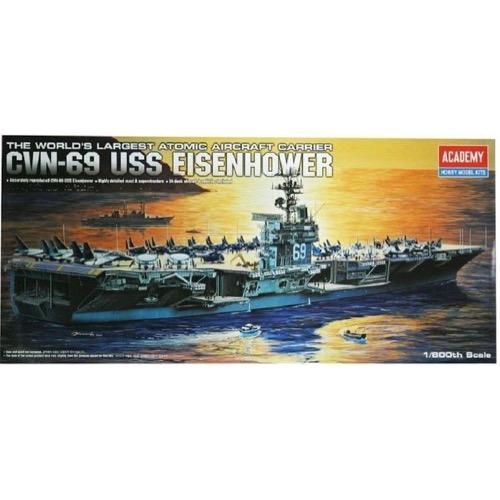
Academy 14212 1/800 U.S.S. CVN-69 Eisenhower
USS Dwight D. Eisenhower (CVN-69) is a modern American nuclear powered aircraft carrier. The keel for this unit was laid in 1970, the launch took place in October 1975, and commissioning to the US Navy took place in 1977. The total length of the ship is 332.8 meters, the overall width is 76.8 meters, and the full displacement is about 92,000 tons. The maximum speed does not exceed 32-33 knots. The on-board armament currently includes: two Sea Sparrow missile launchers, two RIM-116 launchers and three 20 mm Vulcan Phalanx CIWS sets. The aircraft carrier can take on board up to 90 aircraft of such types as, for example: F / A-18 Super Hornet, EA-18 Growler, E-2A Hawkeye or Sikorsky MH / SH-60.
USS Dwight D. Eisenhower (CVN-69) is one of the Nimitz-class aircraft carriers. The ships of this type - until the introduction of the Gerald Ford class units - were the largest ships in history. They were also the first nuclear-powered carrier class in the history of the US Navy. From the outset, they were planned as the backbone of the US Navy strike force, and were expected to work closely with other shielding ships, such as destroyers, frigates, and submarines. They are almost a symbol of the dominance of the US Navy in the seas and world assessments. One of the aircraft carriers of this class is the USS Eisenhower (CVN-69), which was built at Newport News Shipbuilding in Newport News, Virginia. The ship did not manage to take part in the Vietnam War (1964 / 1965-1975), and did not take part in the unsuccessful Orli Szpon operations of 1980, even though she was at the Indian Assessment at the time. In 1982, the unit operated off the shores of Lebanon in connection with the ongoing civil war in that country. Two years later, the ship took part in the celebrations to mark the 40th anniversary of the Allied landing in Normandy. USS Eisenhower insured American activities during the First Gulf War in 1990-1991. The aircraft carrier remains in active service, but it is expected to be withdrawn from the line around 2030.
This model of the world's largest atomic aircraft carrier features a highly detailed mast and superstructure. 1:800 Scale, 34 deck aircraft and vehicles including: F-4J, LTV A-7B, EA-6B, A-6A, SH-3, E-2, F-14, RA5
Features
- 178 plastic pieces attached to sprues and molded in grey..
- Super detailed display model..
- The exterior hull of the carrier is finely engraved with variou minute details..
- Propellers with long driveshafts reach out of the bottom of the hull..
- Highly detailed deck superstructure assembly..
- Accurately reproduced mast and radar assembly..
- 34 aircraft, such as jet fighters, bombers, and helicopters, ar included to dress the main deck..
- A large display stand with a nameplate is included..
- Waterslide decals..
- Detailed pictorial instructions guide you through assembly..
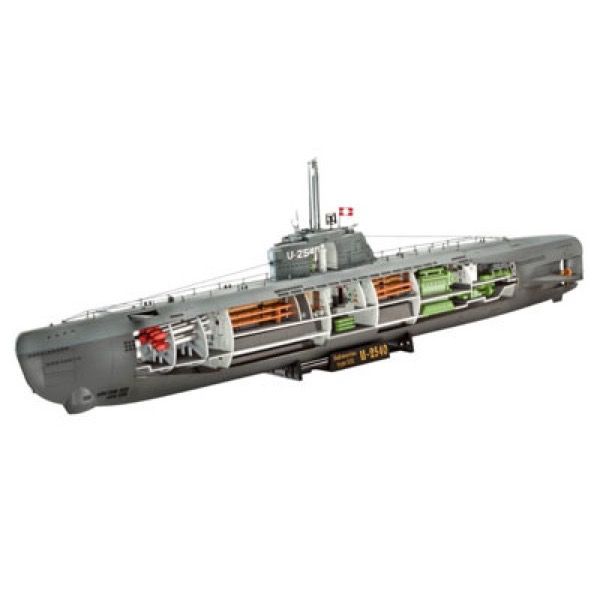
Revell 05078 1/144 U-Boat Type XXI with Interior
High quality, precision plastic model kit. Paint and glue not included. Requires assembly and painting. For intermediate to advanced skill modellers.
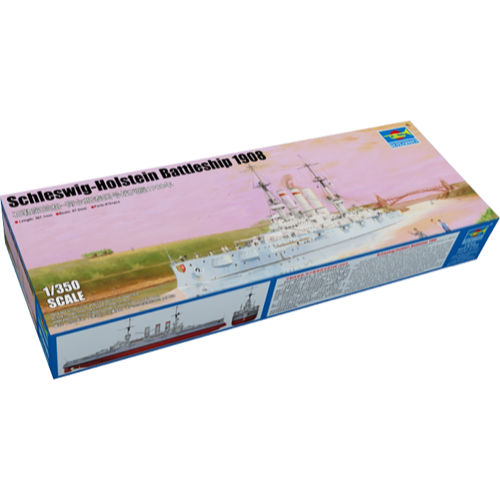
Trumpeter 05355 1/350 Schleswig-Holstein Battleship 1908
German battleship Schleswig - Holstein Stein is a level before dreadnoughts in Germany, in 1906 the water base displacement of 13,993 tons total length: 127.7112 m speed of 18 Clearly defined, the terms of the Treaty of Versailles after the First World War, Germany was defeated: the defeat of Germany are not allowed to build and has a fearless type of battleship, only allowing it to retain eight of the old battleship, the ship except for training and coastal defense, not for other purposes, these restrictions is the German Navy an ability in areas with limited naval forces. Schleswig - Holstein Stein is allowed Germany to retain one of the old ships. Before the new ship into the water in Germany, Schleswig-old ship has been quietly fearless bear the heavy responsibility of defending the territorial waters of Germany.
Features:
- kit contains over 470 parts
- hull split into two parts
- Deck wood pattern finely rendered
- Contains display stand
- photo etched parts included
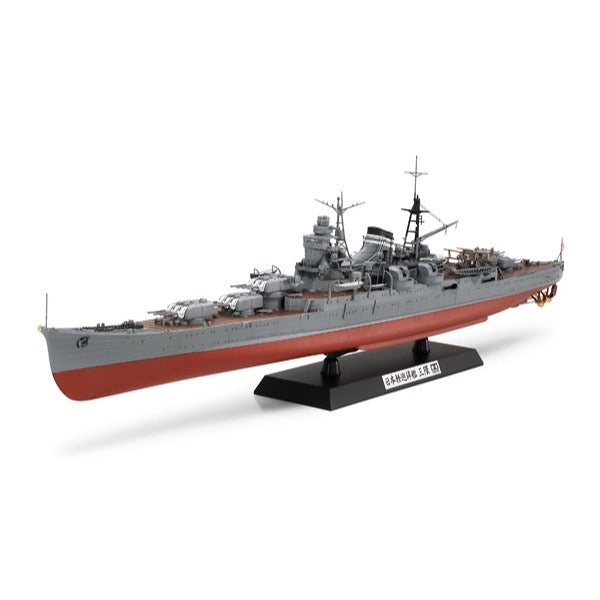
Tamiya 78022 1/350 Mikuma Light Cruiser
The Japanese Navy's Mogami-class light cruisers were planned under the London Naval Treaty limits with an 8,500 ton standard displacement with 5 triple 15.5cm gun turrets. There were four ships in the class with the Mikuma being the 2nd to be completed in August 1935. She received distinctive Mogami-class features such as the flared bow, compact superstructures, and uniquely shaped funnels, while having different details on the aft mast and crane from those of Mogami, the 1st ship of the class. With the withdrawal from the treaty, the Mikuma was refitted with 20.3cm twin gun turrets and was converted into a heavy cruiser in 1939, then the Mikuma, Suzuya, and Kumano joined the 2nd Fleet as part of Cruiser Division 7. At the start of the Pacific war, they were sent to escort the Malay invasion force, and in February 1942, the Mogami and Mikuma escorted transports for the invasion of Java at Bantam Bay. In June 1942 at the Battle of Midway, the Mogami rammed the left side of the Mikuma during their withdrawal from the bay to avoid attacks from the U.S. submarine. To make matters worse, a concentrated attack by 114 aircraft hit Mikuma 6 times which made her the first Japanese heavy cruiser to be sunk in WWII.


